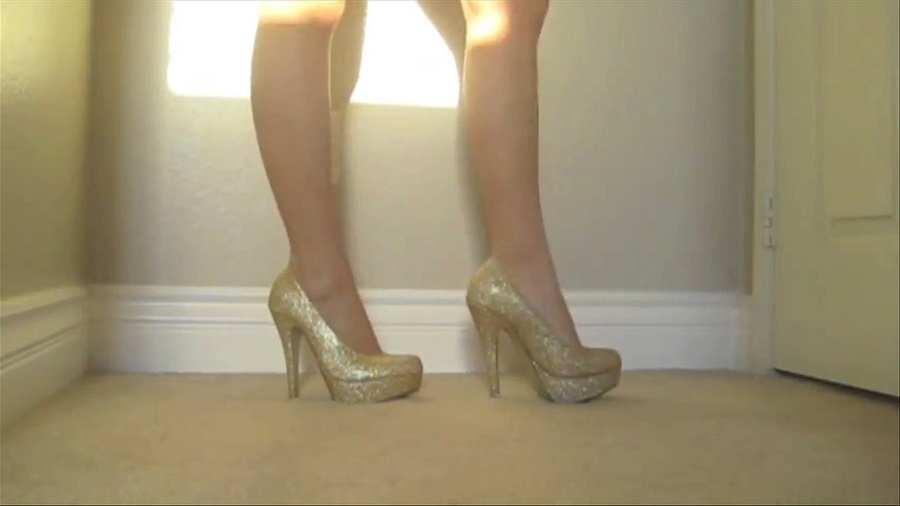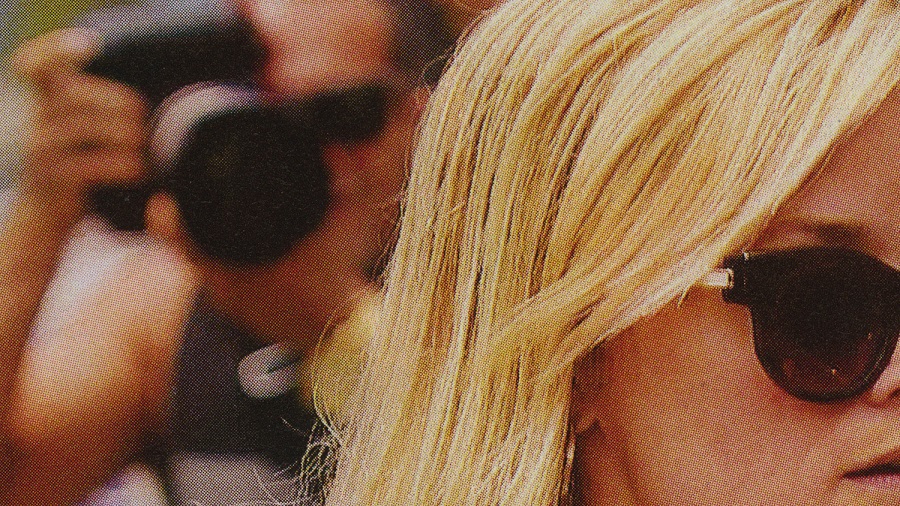Notes written for the occasion of JUST LIKE US: Jesse McLean in Person. April 18th, 2015 @ the Museum of Human Achievement.
“The anachronistic state of the pastoral is itself convulsive and self-contaminating, accessing both a Golden Age, a prehistory somehow concurrent with, even adjacent to, the present tense, and a sumptuous and presumptive afterlife, partaking of Elysian geography, weather and pastimes. A Velvet Underground…Another name for it is Death, or Media.”
– Joyelle McSweeney¹
Don’t call Jesse McLean a post-internet artist. YouTube rips may pepper her sequences. An extended screening of her work clearly demonstrates many hours spent online. She casts amateur haulers and unboxers in starring roles, grants cameos to celebrities, and draws on web fan culture for material. But make no mistake. Hers is a cinema of big screens and big sounds, best experienced collectively in the shared space of a theater.
McLean has recognized that the gold rush on post-internet cinema may hit pay dirt all too quick. Prospectors drag n’ drop their surfing loot. Screens burst with w00t. Artist-miners cast their lot with code, and no shortage of culture workers strain under the duress of the digital, but she’s drawn her maps with a more expansive media archaeology: the powerful, and powerfully mixed, messages of popular culture.
No great surprise, then, that Warhol pops up in McLean’s videos. The stratospheric influence of Andy and his superstars on art and music, no doubt. The little Warhola from Pittsburgh, fellow Pennsylvanian, who made good. Most importantly, the wonderfully odd, quasi-mystical writings that comprise his diaries. But McLean isn’t aiming to ape his cold conceptualism. Quite the opposite. To tweak some Velvet lyrics, it’s the end of an old age. If pop falls down around interiority in coolly emphasizing surface, and if Warhol presides over the evacuated self, McLean’s work warms up the goods to reassert an interior, but only in the rear-view mirror of media. She consistently turns up the temperature on things we may typically associate with pop moves: appropriation, shopping, celebrity, and hit music.
With a willingness to unapologetically go for “the feels,” McLean is one of today’s more astute needle-droppers. She’s not exactly a crate-digger for obscure tracks, but rather possesses an ear for common tunes buried beneath the surface. It’s not often one finds a rich combination of contempo experimentalist sound design and ear wormy hooks.

McLean’s capacity to hold the hot and cool in one hand plays out elsewhere in her practice. One can see it in her use of found footage, which is neither of the pre-eBay, Baldwinian mode nor of the internet as world-of-things supercut school. She surprises us. Remote (2011) at first behaves as many post-Benning landscapes do, carefully constructing a tense, depopulated diegesis out of considered compositions and brooding realist sound. But McLean goes further, or goes somewhere else, after doing so. A decontextualized voice that carries obvious traces of appropriation, announcing itself as horror pic, triggers a sense that Remote doesn’t play by the playbook. In a startling sequence, cutting original footage with and against movie clips, we eventually arrive at what is a reveal, a veiling, and a condemnation. Grainy, noisy black and white footage of soldiers at war radically alters the piece. McLean lands on a home note, as it were, but after witnessing the battle footage, we cannot stare back at the tall, solitary man in the window in the same way ever again.
These patterns of articulation, modulation and return run throughout McLean’s videos, and are especially successful when she includes language in the mix. In using disembodied narration, isolated interview audio, and, most critically, text, McLean creates the possibility for a rich, complex tone shifting. Moving between irony and sincerity is no easy feat. Irony can distance a viewer, or create a sense of superiority to a film’s subject. Sincerity, on the other hand, while enviable, can quickly dissolve critical distance, and risks reducing subject, maker and viewer to a crude equivalency. McLean escapes both traps.
We get an early glimpse of this technique in The Eternal Quarter Inch (2009). As we read “I saw peace / Marvelous peace / I’ll tell you, I was never, ever the same after that,” the “I” destabilizes itself, and allows us in. Who is this “I”? By creating room for us to identify or not, to empathize, or not, she generously constructs a subjectivity that explodes the High Church’s transcendental viewer. In the case of The Eternal Quarter Inch, this process feels spiritual, and not only because we’re watching a rocked-out Christian service. Again, McLean brings us to a home note, after transporting us through a neo-psychedelic register of mandala-like patterning, ending on a circle of hands. Returning to hands, and placing us in the sway of the crowd, she cracks a spectator code to access an affect as bewildering as it is electric.

But McLean is no pastor, and her work is hardly pastoral. The Invisible World (2012) and Just Like Us (2013), each in their own way, pose questions about consumer goods, objecthood, materialism and our troubled relationship with the built environment. Most of us are accustomed to thinking through the Great Pacific Garbage Patch via liberal documentary or Prezi-style informatics. Or perhaps we scroll through internet-searched images on our phones, enthralled and immobilized in the spell of spoiling the world. McLean offers us another way through, or at least a way through to look anew at our attachments to possessions. In a story of a deceased hoarder brought back to life by means machinic and supernatural, The Invisible World leaves us wondering, what are we going to do with all this stuff? Do our attachments to possessions leave us trapped in piles, engaged in personal archive building at the expense of the planet? The video proffers no easy solutions.
Just Like Us extends this thinking or working-through to the nexus of celebrity culture and vernacular landscape. In repeating a phrase posed regularly by Us Weekly – are they just like us? – McLean asks, in a sense, a rhetorical question. They shop. They eat. They shit. They die. But Just Like Us, like so many of her other pieces, turns again toward the ambiguous interior of the “I.” A love story unfolds, or at least an angular, somewhat tender accounting of love-making in a mall parking lot. Is it a fantasy of making out with Kimye after finishing a shift at Target? Perhaps. It’s also entirely plausible that this “I” did in fact get it on, and simultaneously not important whether it really happened. It has happened, is probably happening now, and will happen as long as there are cars, people and empty lots.
McLean’s insistence on polyvocal subjectivity allows, too, for the site itself to reveal its complicated locus, as geological history is unearthed. We learn that what we are looking at – drab cement, familiar signs, it could be anywhere – was once an ocean. If that doesn’t induce a vertiginous sense of humanity’s complicated impact on the Earth, a phrase certainly does: “My house is now a Best Buy.” A home was razed for a big box store. A house is built from the many commodities sold by the same big box store.
The vernacular landscape, its anywhere-ness and nowhere-ness, along with her open-ended “I” allow for a generous entry point: who couldn’t relate in some way to the stories of both the stars and the non-stars. And who doesn’t stop to think on occasion, we’re all star-stuff, aren’t we?

The stuff of stars is picked up and amplified in I’m in Pittsburgh and it’s Raining (2015), McLean’s most recent video. A work about the work of doubles, itself enacting doubling, makes for another exploration of selfhood, this time centered around the production of the Gyllenhaal/Hathway vehicle, Southpaw (2015). McLean returns to disembodied interview narration. She records audio with the body double for Hathaway, and samples images from the movie which feature her stand-in’s body, masking out her body in the frame to simultaneously protect her identity and erase the female lead. I’m in Pittsburgh and it’s Raining’s “I” is both critical to the feature film production and utterly scrubbed. What could be more authentic than a behind-the-scenes interview with a body double? What could tell us more about what makes a movie? Just as we spend time in the dark watching cinema, alternately blinded by star power and unable to see, depending on the shutter, so it is with the model interviewee. She doubles our vision but appears as one. To disturb this vision by showcasing behind-the-scenes labor is to borrow from a slightly anachronistic toolkit, a self-reflexive practice intended to demystify media, and yet in McLean’s hands – in fact, her hands substitute for the body double’s hands – demystification becomes reflective. As we watch the glazer work the mirror’s surface, the fog of feature cinema lifts, and we are left with ourselves, wondering, equally, not only whom would we play, for whom could we stand in, but who plays us.♦
¹ McSweeney, Joyelle. The Necropastoral: Poetry, Media, Occults. U of Michigan, 2014.
Jason Livingston is a film and video maker currently based in Iowa City, IA, working with the Department of Cinema and Comparative Literature at the University of Iowa. A teacher, occasional programmer, and a lover of movies avant as well as mall-tastic, he has worked with many non-profits, including Cornell Cinema, the Experimental TV Center, the Standby Program, the Flaherty Seminar, and others.
